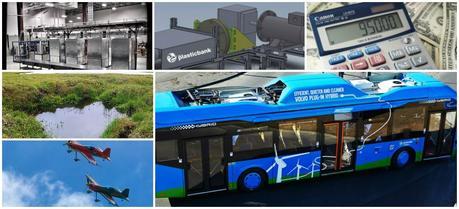
Here’s a bit of energy news that didn’t make it into our daily coverage during the past week. In this review, we collected some of less big, but nonetheless interesting news, of the week that went by, from the world of energy science and technology.
SEE ALSO: 7/18/2014 This Week in Energy: Beyond Headlines
Renewables
Atlas to Map Australia’s Wave Energy
The Australian Renewable Energy Agency announced $1.3 million funding for CSIRO to undertake an innovative wave resource mapping and modelling project. ARENA CEO Ivor Frischknecht said the funding would enable CSIRO to develop a publically accessible wave energy atlas that would allow users to better assess the feasibility of wave power projects off Australian shores.
UK’s DECC Publishes Bioenergy Emissions Model, Calculator
Launch of scientific calculator that investigates the impact on carbon emissions of biomass sourced from North America to produce electricity.
Energy Economics
ADB: Asia’s Governments Must Make Tough Choices in Energy Investments
Asia’s governments must make tough choices in energy investments that can provide affordable energy while meeting pressing environmental objectives, especially on climate change, says a study by the Asian Development Bank’s (ADB) Independent Evaluation Department.
ADB Maintains Developing Asia Growth Forecast
Developing Asia remains on track toward steady growth in 2014 despite slower-than-expected growth in the United States (US) in the first quarter, says a new Asian Development Bank (ADB) report.
Environment
Certain Arctic Lakes Store More Greenhouse Gases Than They Release
New research, supported by the National Science Foundation (NSF), counters a widely-held scientific view that thawing permafrost uniformly accelerates atmospheric warming, indicating instead that certain Arctic lakes store more greenhouse gases than they emit into the atmosphere.
Engineers Print 3D Item From Recycled Ocean Plastic
UBC mechanical engineering students recently teamed with The Plastic Bank to develop the extruder—a device that reduces plastic waste to a long plastic filament that can then be used to make 3D printed items. The Plastic Bank, a Vancouver-based social enterprise, will utilize the invention to help alleviate poverty and reduce waste by transforming discarded plastics into new items using 3D printing.
Iberdrola, GE Hitachi Join Forces to Reuse UK Nuclear Waste
IBERDROLA and GE Hitachi Nuclear Energy (GEH) have signed a Memorandum of Understanding on cooperation towards the deployment of PRISM technology as a credible long-term solution to reuse existing reprocessed plutonium in the UK.
Fuel Cells
The New Power Generation: This Fuel Cell Startup Could Spark a Revolution
There’s more than one way to get energy out of natural gas. For decades, one of the most promising methods — and also most difficult to pull off — has been the fuel cell. A fuel cell works like a battery, using a simple chemical reaction to provide energy. In fuel cells, this reaction involves hydrogen molecules abundant in natural gas and oxygen from ordinary air.
Energy Efficiency
New Communications System to Contribute to Lighter, More Fuel Efficient Aircraft
Experts in in antennas and electromagnetics from Queen Mary University of London will work with industry partners in a £11.6m project looking at future communications systems for civil aircraft.
Gas Natural Fenosa, Philips Agree to Promote Efficient Lighting, Energy Services
The two multinational companies will collaborate on campaigns with their customers to raise awareness on efficiency and will work together on indoor and outdoor lighting projects and energy services.
Electric Vehicles
ABB, Volvo Form Partnership for Electric, Hybrid Bus Fast-Charging
ABB, the leading power and automation group, announced a partnership with Volvo Buses, one of the world’s leading bus manufacturers, to co-develop and commercialize electric and hybrid buses with open standards-based direct current (DC) fast charging systems.

